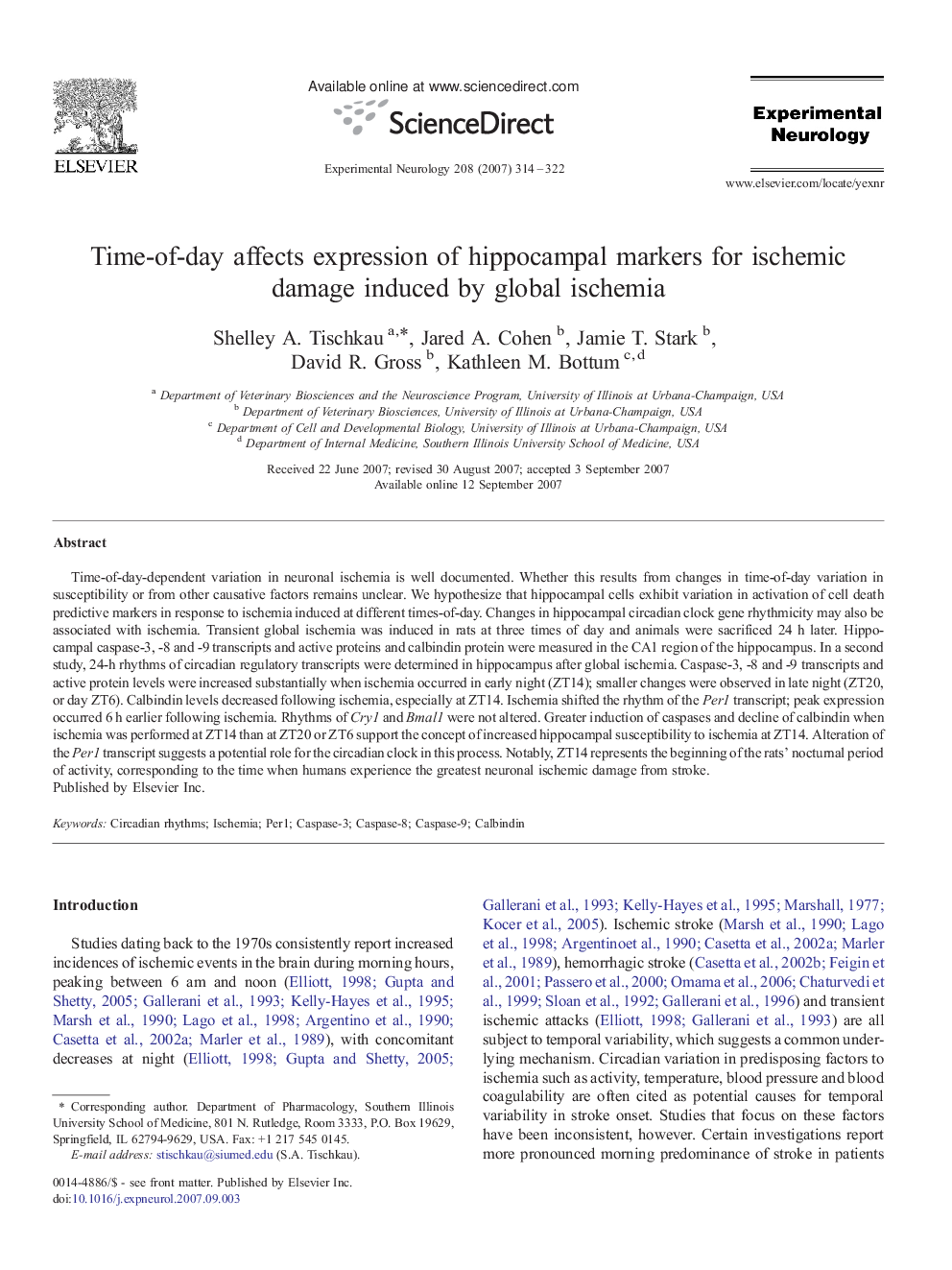| Article ID | Journal | Published Year | Pages | File Type |
|---|---|---|---|---|
| 3056883 | Experimental Neurology | 2007 | 9 Pages |
Time-of-day-dependent variation in neuronal ischemia is well documented. Whether this results from changes in time-of-day variation in susceptibility or from other causative factors remains unclear. We hypothesize that hippocampal cells exhibit variation in activation of cell death predictive markers in response to ischemia induced at different times-of-day. Changes in hippocampal circadian clock gene rhythmicity may also be associated with ischemia. Transient global ischemia was induced in rats at three times of day and animals were sacrificed 24 h later. Hippocampal caspase-3, -8 and -9 transcripts and active proteins and calbindin protein were measured in the CA1 region of the hippocampus. In a second study, 24-h rhythms of circadian regulatory transcripts were determined in hippocampus after global ischemia. Caspase-3, -8 and -9 transcripts and active protein levels were increased substantially when ischemia occurred in early night (ZT14); smaller changes were observed in late night (ZT20, or day ZT6). Calbindin levels decreased following ischemia, especially at ZT14. Ischemia shifted the rhythm of the Per1 transcript; peak expression occurred 6 h earlier following ischemia. Rhythms of Cry1 and Bmal1 were not altered. Greater induction of caspases and decline of calbindin when ischemia was performed at ZT14 than at ZT20 or ZT6 support the concept of increased hippocampal susceptibility to ischemia at ZT14. Alteration of the Per1 transcript suggests a potential role for the circadian clock in this process. Notably, ZT14 represents the beginning of the rats' nocturnal period of activity, corresponding to the time when humans experience the greatest neuronal ischemic damage from stroke.
